#health of america
Explore tagged Tumblr posts
Text

OMG, this is a Must Watch!
The good industry is dirty- Kiana is talking about it and bringing forth amazing points!
Let's talk about it!!
Fast food is $$$$.
She points out that fast food prices, often blamed on inflation have risen higher and faster than inflation actually has. AND most chains have discontinued healthier options, like chicken breast and/or a simple salad.
The Pivot to target Ozempic Users
That's right! A food company giant is pivoting to target Ozempic and Wegovy users with ultra processed foods like pizza and pasta... with "higher" protein.
The truth bombs Continue....
One author is found to be PAID by huge companies... to blast back against the ANTI UPF book published last year....
If you need a reason to stop eating crap- this is it. These companies KNOW they are unhealthy. They know. And will continue as long as their profit margin remains.
Time to drive them bankrupt.
BANKRUPT
Like Dodgeball says "You gotta get angry! You gotta get mean!"
#ultra processed foods#upf#healthy lifestyle#getting healthy#losing weight#healthy eating#fitblr#healthy habits#operation lose this gut#weight loss#operationlosethisgut#weight loss journey#dirty money#dirty companies#our health is for sale#the bastards#profit#health of america#your health#youtube#kiana docherty#health buzz#health#health benefits#obesity#morbid obesity#fast food#our food is killing us#food#healthy food
5 notes
·
View notes
Text
Please, spread this for those who might need it right now
U.S. suicide hotline: call or text 988 (available 24 hours)
U.S. trans lifeline: (877) 565-8860 (when you call, you’ll speak to a trans/nonbinary peer operator. full anonymity and confidentiality)
Substance Abuse and Mental Health Services Administration (SAMHSA) National Helpline: 1-800-662-HELP (4357) – provides 24/7 confidential support and referrals for individuals and families facing mental health and substance use disorders, including panic attacks and anxiety.
LGBT National Help Center: (888) 843-4564
Trevor Project: Call (866) 488-7386, text START to 678-678, or chat online.
Take care of yourself and each other. Please stay safe ♡
#election 2024#us elections#donald trump#kamala harris#politics#news#president#2024 presidential race#usa#lgbt#lgbtq#lgbtqia#trans#transgender#mental health support#mental health awareness#signal boost#current events#america#american
50K notes
·
View notes
Text


#josh shapiro#christofascists#monopoly of violence#ceo down#violence is the most american solution to any problem#luigi mangione#us health system#living in america#united healthcare
48K notes
·
View notes
Text

Interesting 🤔
#Interesting 🤔#health insurance#health#ausgov#politas#australia#usa#america#brian thompson#rest in piss#rest in pieces#rotinpiss#rot in hell#united healthcare#unitedhealth group inc#unitedhealthcare#unitedhealthgroup#unitedhealth#uhc generations#uhc ceo#uhc lb#uhc#fuck ceos#ceos#ceo#auspol#tasgov#taspol#fuck neoliberals#neoliberal capitalism
13K notes
·
View notes
Text
youtube
Watch the 2024 American Climate Leadership Awards for High School Students now: https://youtu.be/5C-bb9PoRLc
The recording is now available on ecoAmerica's YouTube channel for viewers to be inspired by student climate leaders! Join Aishah-Nyeta Brown & Jerome Foster II and be inspired by student climate leaders as we recognize the High School Student finalists. Watch now to find out which student received the $25,000 grand prize and top recognition!
#ACLA24#ACLA24HighSchoolStudents#youtube#youtube video#climate leaders#climate solutions#climate action#climate and environment#climate#climate change#climate and health#climate blog#climate justice#climate news#weather and climate#environmental news#environment#environmental awareness#environment and health#environmental#environmental issues#environmental education#environmental justice#environmental protection#environmental health#high school students#high school#youth#youth of america#school
23K notes
·
View notes
Text
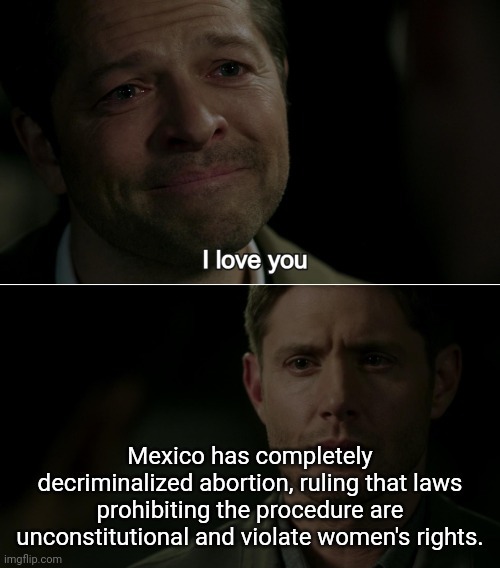
source 1
source 2
#destiel meme#destiel meme news#news#world news#abortion#abortion laws#abortion rights#mexico#latin america#YEAHHH GO MEXICO GO#reproductive rights#reproductive health#watching the notes go up on this with the jerma gif has been amazing#viva mexico
86K notes
·
View notes
Text

#Idk if someone posted this on here yet. ME.#Though I do not currently live in America and have to have health insurance to maintain my visa so its OK.#talk
5K notes
·
View notes
Text
Stay vigilant. While Trump is popping off about Canada, Greenland, and Mexico, Republican Andy Biggs has introduced House Resolution 7.
This line, "Whereas health care for women should also address the needs of men, families, and communities as they relate to women’s health care," implies that men could potentially dictate women's healthcare; for example, a woman might not be able to use birth control without her husband's permission.
I know that a few states still require written spousal consent for sterilization, and I am concerned that this bill could introduce the same concept for smaller healthcare decisions.
The primary focus of healthcare should be the patient, not the people surrounding them.
EDIT: Since I've shared this, a new bill to Ban Abortion nationally was proposed. Please share.
https://www.congress.gov/bill/119th-congress/house-bill/722?fbclid=IwY2xjawIHL-RleHRuA2FlbQIxMQABHVL5MOT6zFKNuV1ELJcsHheYZx3AIBtB79AqSLbV4ZJKYPxbP-wMdardlA_aem_SwI8xeC3KvFdBMMaQruF5g
#donald trump#dump trump#reproductive freedom#reproductive rights#reproductive health#reproductive justice#protect womens rights#protect women#pro women#pro choice#womens rights#keep your laws off my body#fuck trump#democracy#this is america#us politics#usa
1K notes
·
View notes
Text


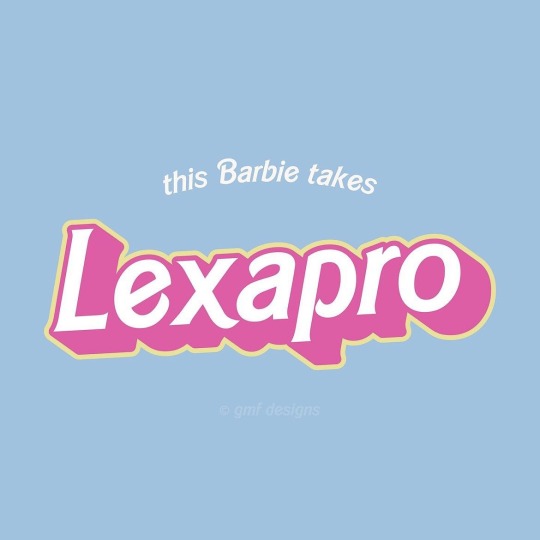
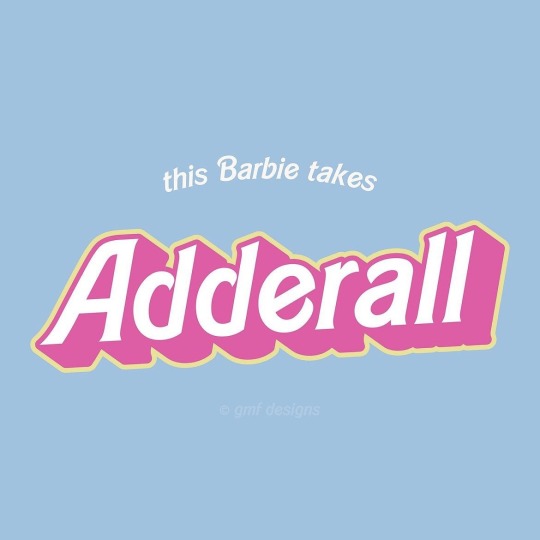
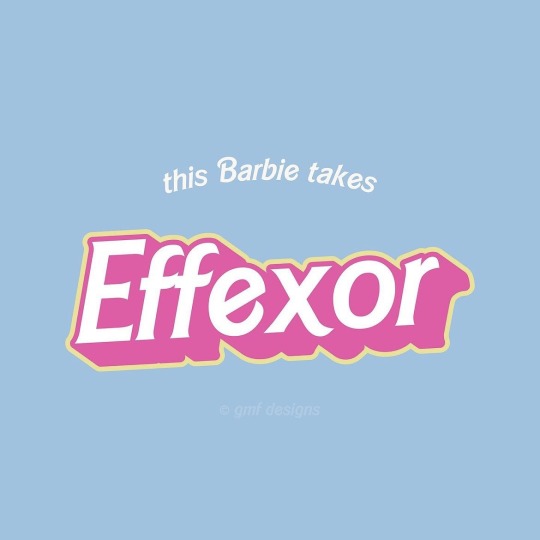

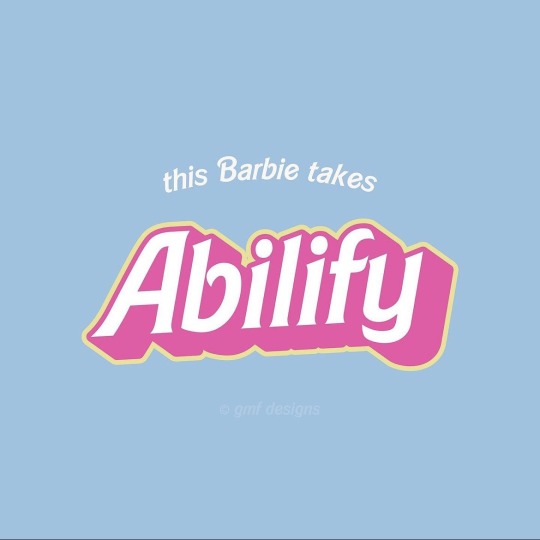

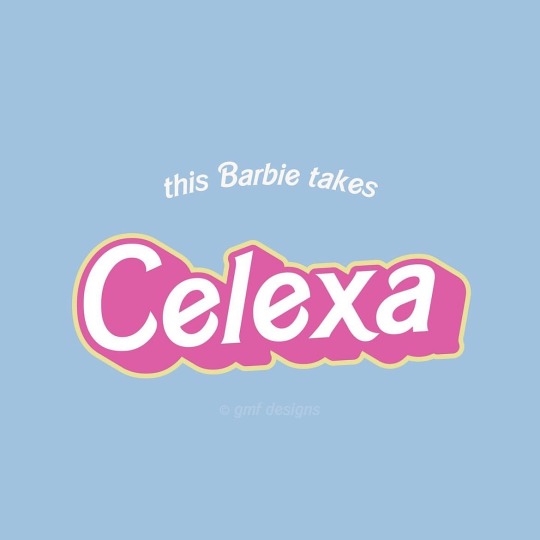

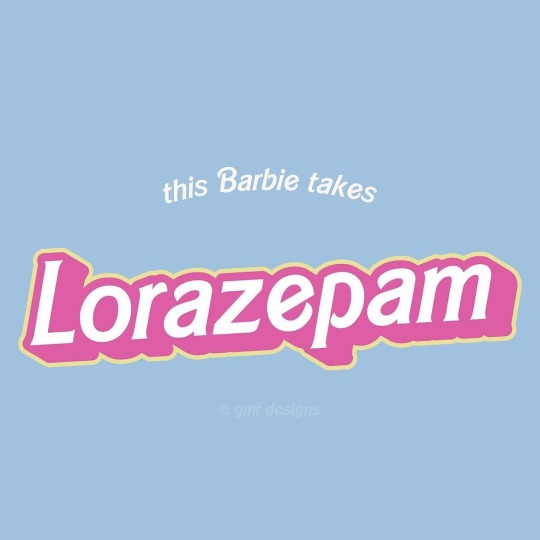

gmf.designs on ig
#barbie#barbie 2023#greta gerwig#margot robbie#ryan gosling#america ferrera#john cena#dua lipa#art#michael cera#issa rae#kate mckinnon#emma mackey#alexandra shipp#simu liu#helen mirren#mental health#1k#10k#film
14K notes
·
View notes
Text
So since Americans are being isolated from reliable information regarding health and global diseases, this might be helpful. You can sign up for newsletters from the World Health Organization:
1K notes
·
View notes
Text
"In a major change that could affect millions of Americans' credit scores, the Consumer Financial Protection Bureau on Tuesday [January 7, 2025] finalized a rule to remove medical debt from consumer credit reports.
The rule would erase an estimated $49 billion in unpaid medical bills from the credit reports of roughly 15 million Americans, the CFPB said.
That could help boost those borrowers' credit scores by an average of 20 points, helping them qualify for mortgages and other loans.
"No one should be denied economic opportunity because they got sick or experienced a medical emergency," Vice President Kamala Harris said in a statement touting the new rule.
She announced the proposal for the rule last June alongside CFPB Director Rohit Chopra.
"This will be life-changing for millions of families, making it easier for them to be approved for a car loan, a home loan or a small-business loan," Harris added.
Major credit reporting agencies have already announced voluntary steps to remove medical debt from their reports.
The final rule is set to take effect in March [2025] – but that timeline could be delayed by legal challenges."
-via ABC News, January 7, 2025
#united states#north america#us politics#medical debt#public health#american healthcare#us healthcare#debt#debt relief#credit score#good news#hope
964 notes
·
View notes
Text
for those who are devastated about the election results right now, here’s your gently reminder to take some time offline, read your favorite book, write that fic you’ve been wanting to write, play with your pets, watch that film on your to-watch list, rewatch your comfort tv show, drink some water, get yourself something delicious, have a nice and relaxing bath, look at the pretty skies and take a deep breath. you’ve survived this far and you will continue to survive. this is not the end ♡
#election 2024#us elections#politics#news#current events#donald trump#kamala harris#joe biden#usa#american#america#president#2024 presidential race#mental heath awareness#mental health#self love#positivity#self care#mental health support
3K notes
·
View notes
Text
Deny. Defend. Depose.
It is clear to those of us that live in America, the only people we truly have on our side are ourselves. The ruling class has made it clear we don't matter to them.
Luigi Mangione was arrested and happened to have every single piece of evidence on him that law enforcement was looking for, including the parts for the ghost gun, inside his backpack (that he also got rid of in Central Park containing the Monopoly money???). Either he was trying to get caught or that evidence was planted. And when he was being forcefully pushed into the jail, he hollered back to the press about "injustice" and "being an insult to the intelligence of American citizens and our lived experiences."
The people have now turned against corporate America and the CEOs and billionaires are fucking terrified. Nothing the news stations are saying to us are changing our minds. The American people have finally united over this issue and there is no going back for us. Whoever did kill Brian Thompson (and theories abound on the game The Adjuster is playing because no one plays Monopoly alone) exposed the very real divide that exists between every day citizens and the extremely wealthy. Things were easier for them to control when they were able to divide us, but now that we are aware of how uncertain our future is in America and seeing just how little we matter to the people who take our money, we have realized that we have more in common with each other than the people who control every aspect of our lives. We are waking up.
There isn't one person in this country who hasn't been a victim to the predatory scam that is private health insurance. Medical debt is the leading cause of bankruptcy in America, and many of us are one ambulance ride or hospital stay away from homelessness. We all know people who have died because the insurance company denied them the treatment they needed or waited until it was too late for an approval of a medical claim to matter anymore.
Recently, I decided to be tested for autism and ADHD. Not life-threatening or anything, but my life is still in shambles and I want to know if I'm going untreated for something else. Before being tested though, I was informed that the insurance company (Aetna) has said that they were going to cover the full cost of the testing I was having (which was six hours of testing by the way). She even made sure several times that they were, in fact, going to cover it in full and they said yes.
The same day that Brian Thompson, CEO of another horrible healthcare company, was murdered in broad daylight, I received a call from that doctor's office with the woman telling me that Aetna was now telling her they never agreed to cover my testing and that they are going to bill me for $1600 (where the hell am I supposed to get that?) and she is fighting them, but considering our lives don't matter to the people who tell us what healthcare we are and are not allowed to receive, I don't think they will feel compelled to change their minds because they are bloodsucking parasites who only care about lining their pockets while I don't even have $6 lying around, let alone $1600!!
Corporate America leeches off our taxes. They take and take and take and we see nothing in return. They raise prices on insurance coverage and then deny us the very coverage that we pay for. They poison our food, price gouge our poisoned food, and then force us to pay for the treatment we get when the food makes us sick. Corporate America profits off of our hard work, our taxes, our health, our lives, our deaths.
I don't know if this will reach a larger audience or not, but I wanted to talk about it on Tumblr because this platform seems to be a crossroads for every type of creative soul. I initially brought up this idea on TikTok earlier, but I want to see if it can get traction in other places as well since I have fewer than 3,000 followers on TikTok (and I have seen a small few express interest in my idea in the hours since I posted the video.)
We're busy being lectured by politicians and the news media because while they are clutching their pearls at what happened to Brian Thompson, the rest of us do not give one single flying fuck about what happened to him. As CEO of a for-profit health insurance company, he signed off on denied claims and death for those of us who struggle to make it from one day to the next. The sicker you are, the poorer you are, the more they force you to struggle and pay. The love to deny coverage because regardless of whether we live or die, they already have the money we are forced to pay them.
I don't condone murder at all, but I also don't care that he was murdered because he was guilty of murdering so many more people in this country through legal means because it's profitable. The CEOs are scared and there are wanted posters with their names and faces popping up in places. Every CEO of every healthcare company is guilty of murdering Americans and they continue to go unpunished for it because "it's just business".
So (if you've read this far) all of this previous rambling is to say that I keep thinking about how I want to make an impression. I want to continue upsetting the billionaires and the CEOs because corporate America is full of murderers who are legally allowed to decide whether we live or die based on which outcome will give them more money.
I have thought about the idea of creating a wall/constructing a wall somewhere as an art piece or something (making a statement) that will somehow honor the memory of people who died because insurance denied them care.
I know I definitely want it to say something along the lines of "In memory of those murdered by for-profit healthcare systems in corporate America". Something blatant. Loud. Something they are forced to look at every single day. Somehow. The wall could have images of those who are gone, or names of the person who died with the name of the insurance company responsible for their death underneath. Just something to make it clear that we see them for what they are. Something to avenge those who were sacrificed so billionaires and CEOS and shareholders could brag about record profits. Something that shows the whole world that American citizens are waking up to who the real monsters are.
The Adjuster (whoever he is or is not) has fanned the flames of revolution in America. He managed to unite us in a way I can't even recall before. It's not over. We know what happened to Brian Thompson was just the beginning, and corporate America only just now realized how much we actually hate them. A single shooter has sparked an awakening in America that is starting to snowball into something much bigger.
So if there is anyone out there who might be interested in collaborating on something like this, please let me know. I know we are all tired and demoralized and we have no money. I want to make a statement though, and I love doing that through art or writing. Collaborating with other people who have been through this same shit will also probably help us unite even more.
This is a watershed moment in American history.
In the words of Kanan Jarrus, Jedi Knight,
"There is a future for us. One where we're all free. But it's up to us to make it happen."
#united states of america#luigi mangione#brian thompson#corporate America is an enemy to the rest of us#united healthcare#aetna#health insurance#deny defend depose#class war#not left vs right but up vs down#project mayhem 2025#revolution is happening now#free luigi mangione#i've been struggling with how to make my voice heard or what kind of impression to leave#and i also really want to bully the 1%#two things i'm good at are being creative and being a petty ass bitch
781 notes
·
View notes
Text

#free palestine#palestine#gaza#free gaza#from the river to the sea palestine will be free#pray for palestine#gaza strip#motaz azaiza#protect journalists#journalism#genocide#mental health#israel is committing genocide#ceasefire#america#usa#israel#permanent ceasefire
3K notes
·
View notes
Text

#luigi mangione#luigi#mario and luigi#fun facts#facts#fact#class war#human rights#usa#america#health#healthcare#bankruptcy#ausgov#politas#auspol#tasgov#taspol#australia#fuck neoliberals#neoliberal capitalism#anthony albanese#albanese government
5K notes
·
View notes
Text
gonna’ be honest. fighting for assisted suicide for mentally ill people before fighting for something like free and widely available dance classes … community centers … free transportation… expanded meals on wheels… etc. is the kind of praxis that accurately shows you just want mentally ill people fucking dead. there’s nothing liberating about it. it’s convincing disabled people that they should act on their illness and simply rid the world of the burden that is themselves instead of doing literally anything else to help them.
989 notes
·
View notes